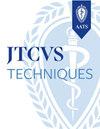Leveraging technology to help the patient: Combined robotic bronchoscopic biopsy with surgical resection during the same anesthetic event
IF 1.9
Q3 CARDIAC & CARDIOVASCULAR SYSTEMS
引用次数: 0
Abstract
Objective
Delays from diagnosis to treatment of early-stage lung cancer affect survival, with variable biopsy wait times often requiring diagnostic wedge resection at planned oncologic resection, resulting in a 20% to 25% benign resection rate. We compared 2 approaches to reduce treatment delays in patients with high pretest probability of resectable malignancy.
Methods
Patients from 2021 to 2024 with a lung nodule who did not have a previous attempt at diagnosis and had a Mayo Clinic solitary pulmonary nodule malignancy risk score ≥90% were offered a Single Anesthetic robotic bronchoscopy with Biopsy, followed by anatomic Resection, if indicated (SABRR). The control group included contemporaneous patients undergoing traditional surgical wedge resection (WR) for diagnosis, followed by anatomic resection if indicated. All patients with benign diagnoses that did not undergo surgery were followed until their nodule decreased in size or resolved.
Results
A total of 138 patients were identified (65 SABRR, 73 WR). There were no differences in clinical characteristics or nodule location between the 2 groups. The mean time from clinic to definitive treatment was 30 ± 21 days in the SABRR group and 32 ± 23 days in the WR group (P = .545). Mean nodule size was larger (2.0 ± 0.9 vs 1.7 ± 0.7, P = .006) and mean operating room time was longer (218 ± 76 minutes vs 113 ± 43 minutes, P < .001) in the SABRR group. There were no differences in postoperative complications or 90-day readmission between groups. Eleven SABRRs were stopped at biopsy alone because of a diagnosis precluding surgical resection. Benign resection rate of 7.6% in the SABRR group was significantly lower than the rate of 21.9% in the WR group (P = .037). All SABRRs that were stopped at biopsy with a benign diagnosis had a decrease in nodule size or repeat benign biopsy within 6 months of their bronchoscopy.
Conclusions
Combined robotic bronchoscopy with biopsy and anatomic lung resection under a single period of anesthesia significantly reduces the rate of benign and unnecessary surgery, as well as mitigates delay from diagnosis to surgery.
利用技术帮助患者:在同一麻醉事件中,将机器人支气管镜活检与手术切除相结合
目的:早期肺癌的诊断到治疗的延迟会影响患者的生存,活检等待时间的变化通常需要在计划的肿瘤切除术中进行诊断性楔形切除术,导致20%至25%的良性切除率。我们比较了两种减少可切除恶性肿瘤高癌前概率患者治疗延迟的方法。方法2021年至2024年期间未尝试诊断且梅奥诊所孤立性肺结节恶性肿瘤风险评分≥90%的肺结节患者接受单麻醉机器人支气管镜活检,如果有指征,则进行解剖切除(SABRR)。对照组包括同期接受传统楔形手术切除(WR)诊断的患者,如有需要则进行解剖切除。所有未接受手术的良性诊断患者均被随访至结节缩小或消退。结果共发现138例患者,其中SABRR 65例,WR 73例。两组患者的临床特征及结节位置均无差异。SABRR组从临床到最终治疗的平均时间为30±21天,WR组为32±23天(P = .545)。SABRR组平均结节大小更大(2.0±0.9 vs 1.7±0.7,P = 0.006),平均手术室时间更长(218±76分钟vs 113±43分钟,P < 0.001)。两组术后并发症及90天再入院率无差异。由于诊断排除手术切除,11例sabrr仅在活检时停止。SABRR组的良性切除率为7.6%,显著低于WR组的21.9% (P = 0.037)。所有在活检中停止良性诊断的sabrr患者在支气管镜检查后6个月内结节大小减小或重复良性活检。结论单次麻醉下,机器人支气管镜联合活检和解剖肺切除术可显著降低良性和不必要手术的发生率,减轻从诊断到手术的延误。
本文章由计算机程序翻译,如有差异,请以英文原文为准。
求助全文
约1分钟内获得全文
求助全文

 求助内容:
求助内容: 应助结果提醒方式:
应助结果提醒方式:


